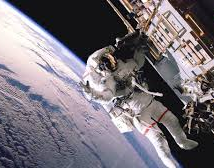
There is no internationally accepted definition of where space begins. The International Aeronautical Federation (FAI) recognizes the Karman line 100km above the Earth's surface as being the boundary between the atmosphere and space.
The region around our Solar System is known as local space. The space between the stars in our galaxy is known as interstellar space, and beyond that is intergalactic space.
Contrary to popular belief, space is not an empty vacuum -- it is a near vacuum. Each cubic kilometre contains a few drifting atoms of gas and dust.
In the region of the Sun, this interstellar medium consists of about 90 percent hydrogen, 9 percent helium and one percent dust.
The interstellar dust consists of tiny grains composed mainly of silicate (silicon and oxygen) and graphite (carbon), as well as small amounts of iron.
Between galaxies, the intergalactic medium consists mostly of ionized hydrogen - atoms of hydrogen gas that have had their electron stripped away.
Space is so big that miles and kilometres become meaningless, which is why people often use the word 'astronomical' to describe exceptionally large numbers.
In local space, distances are often measured in AUs (Astronomical Units) - one AU is 147,000,000 km (the average distance between the Earth and the Sun).
Interstellar space is usually measured in light years (ly). One light year is about 9.5 trillion km (the distane light travels in one year).
Some astronomers prefer to measure large distances in parsecs (pc). One parsec equals 3.26 light years, and a kiloparsec (kpc) is 1000 persecs and a megaparsec (mpc) is 1,000,000 parsecs.
The Andromeda Galaxy (M31), the neares spiral galaxy to our own, viewed across 740 kiloparsecs (about 2.4 million light years of intergalactic space.